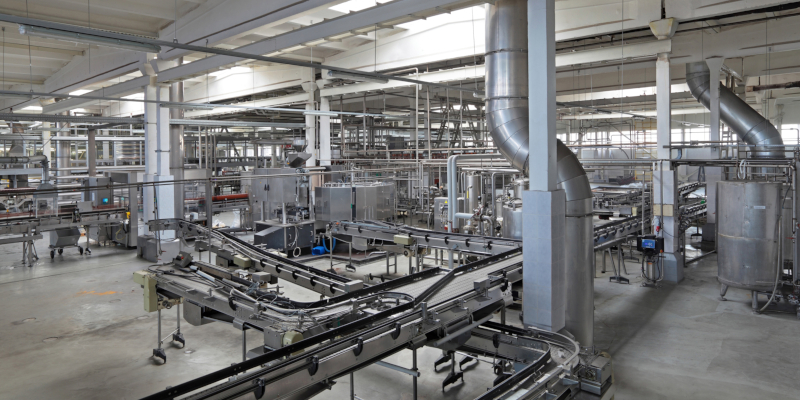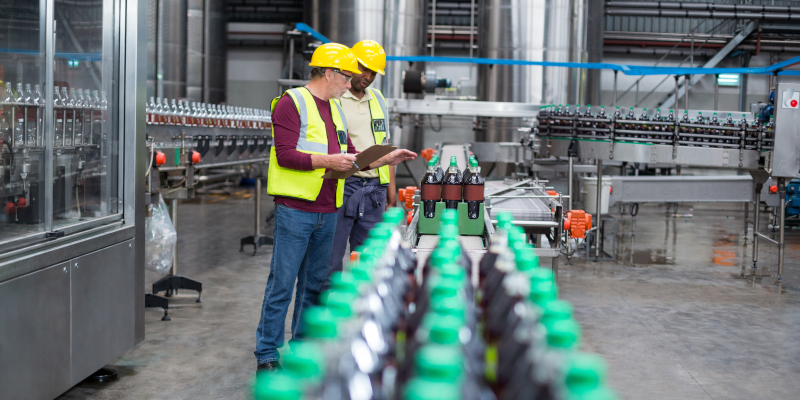Inside Water Walks: Finding hidden opportunities to conserve and reuse water
When companies set bold sustainability goals, especially around water use, it's often helpful to get an outside perspective. That’s where a Xylem Water Walk can make all the difference. These structured, on-site assessments help identify overlooked opportunities to conserve, reuse, or better manage water across industrial facilities – from food and beverage plants to chemical manufacturers and global consumer brands.
At one facility, a global spirits manufacturer in the southern U.S., Xylem conducted a six-hour Water Walk to support the company’s goal of cutting water use by 50% by 2030. Working alongside plant staff, the Xylem team identified ten key areas where water, energy, and chemical use could be reduced – most through operational tweaks rather than costly upgrades. With these changes, the plant is now on track to save more than one million gallons of water annually.
The Water Walks program was developed by Walt Kozlowski, Senior Director of Client Sustainability Solutions at Xylem. With 30 years of experience across industries like automotive, manufacturing, food and beverage, and power, Walt is a seasoned expert in environmental quality, energy conservation, and operational improvement.
Below, Walt describes how Water Walks can help companies accelerate their sustainability progress.
What is a Water Walk?
A Water Walk is essentially a high-level assessment of how and where a facility uses water. It’s a walk-through of a facility, sometimes just a few hours, sometimes a couple of days – where we look for opportunities to reduce, reuse, or recycle water. It’s a process of discovery.
We ask simple questions like “Why is that water running?” or “What’s causing this leak?” Many of the opportunities we find don’t require new equipment – just new ways of doing things.
How do you prepare for a Water Walk?
We start by talking with the customer about their sustainability goals and where they currently stand. Then we dive into plant diagrams to understand how water flows through the facility. Some of these systems can be complex, with lots of intricate piping, so coming in well-prepared helps us stay focused and make the most of our time.

Once we’re on-site, we work closely with the facility team. We take detailed notes, collect water samples, snap photos – whatever it takes to uncover inefficiencies and potential risks.
How do you prioritize what to look for?
I always start by looking for the highest flows of the cleanest water. If clean water is running down a drain, that’s a red flag – we should grab a sample to identify if it can be reused. Finding opportunities to reuse water or optimize energy use in the most resource-intensive processes usually leads to the biggest wins.
Can you share some of the most common issues you find?
We often find water running when it doesn’t need to be – and a lot of the time, the fixes are behavioral.
Take a tap of high-purity water running all day, for example. It might not seem like much, but if a few gallons of water go down the drain every minute, that adds up fast.
Another example could be pumps that leak water onto the floor. The customer might see that every day, and not really notice it anymore. Our job is to identify things like that and show the customer how much it really costs.
Some of our suggestions involve operational changes. At one spirits manufacturer, water was being dumped from a cooling tower when it didn’t need to be, so we recommended a change to the system.
What customers are a good fit for a Water Walk?
We’ve done Water Walks just about everywhere – industrial plants, beverage producers, commercial buildings, even water parks. If water plays a critical role in operations, we can help. In commercial buildings, for example, we might take a closer look at how the cooling or boiler systems are running. In manufacturing, it could be anything from process water and cleaning systems to safety issues that may have been overlooked.
We’ve spotted tanks of water that weren’t being turned over regularly, creating potential for bacterial growth. In that case, we recommended simple changes to keep water moving and reduce health risks.
What role does the customer play in the Water Walk?
They’re central to the process. We always walk the facility with plant staff – they’re the experts on how things run day to day.

Our role is to bring a fresh set of eyes to daily routines and ask questions that might not be asked. We help bring that attention back and then support them in taking action.
What do you enjoy most about leading Water Walks?
It’s a chance to really get to know the people and the plant. We might spend a full day or more walking, talking, and figuring things out together. That time builds trust. We also get to see how things work behind the scenes. And at the end of the day, we’re helping make real progress – finding savings, reducing risk, and making operations more sustainable.
What’s the result of a Water Walk for a customer?
After the Water Walk, we pull everything together – all the data, notes and input from everyone on the Xylem team who was there. We review it carefully to make sure we haven’t missed anything, then create a summary report for the customer. That report outlines what we saw, where the biggest opportunities are, and recommendations for next steps.
Then we sit down with the customer and go through it together. We help them prioritize what matters most for their goals, whether that’s saving water, reducing energy, or improving safety. It’s not just a checklist – it’s a launchpad for action.
Read more about facilities who are successfully conserving and reusing water in Xylem’s 2024 Sustainability Report.

